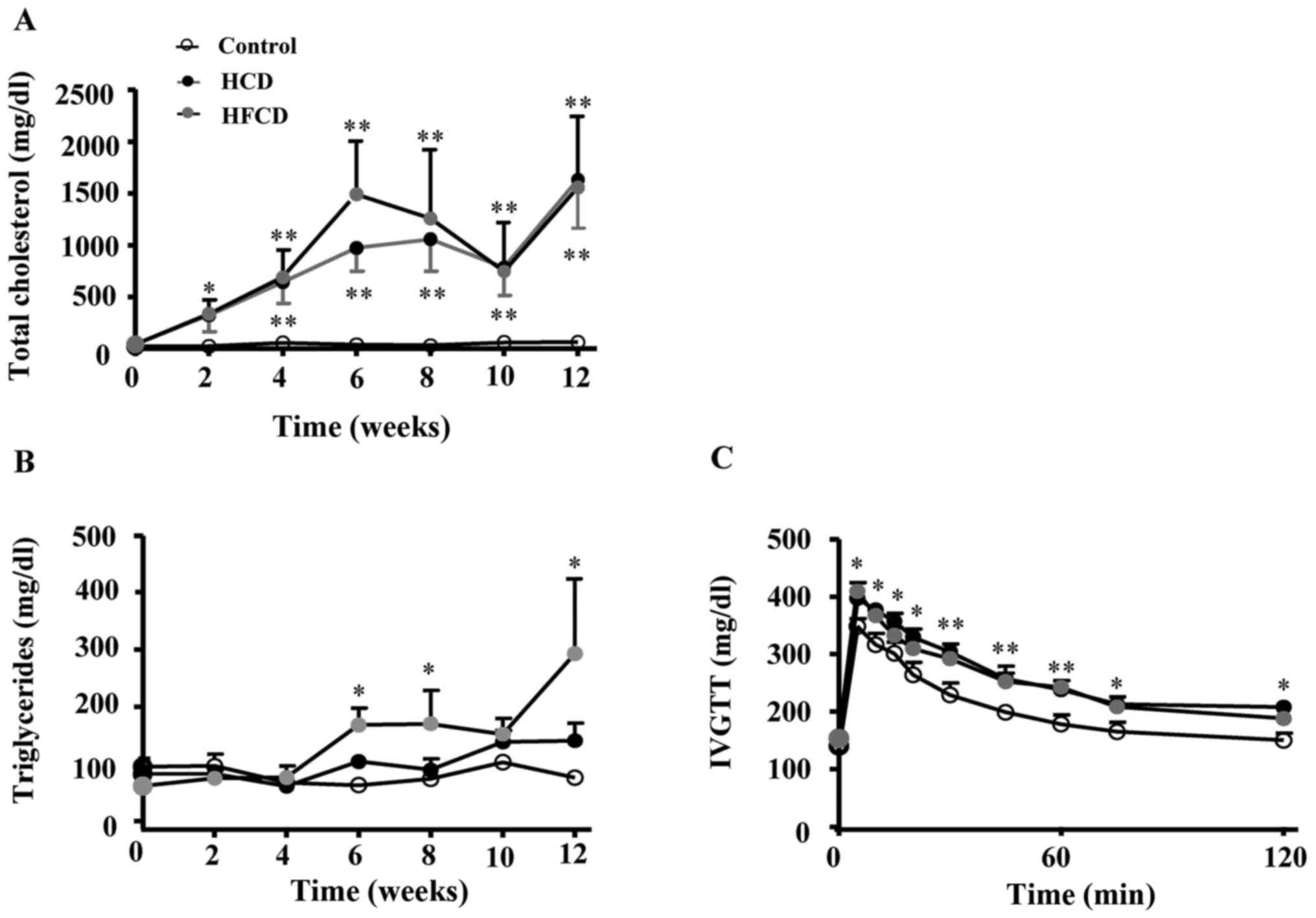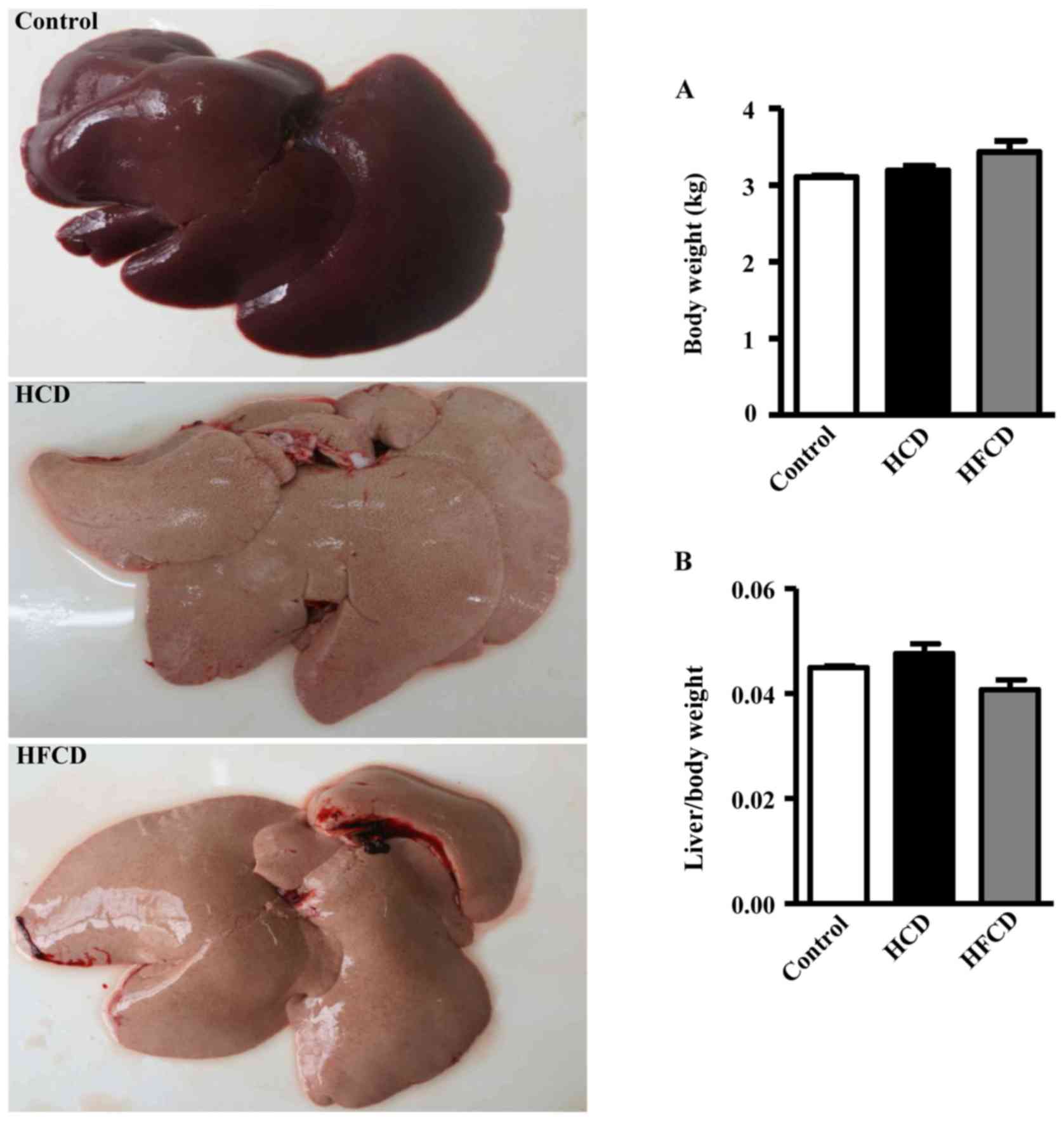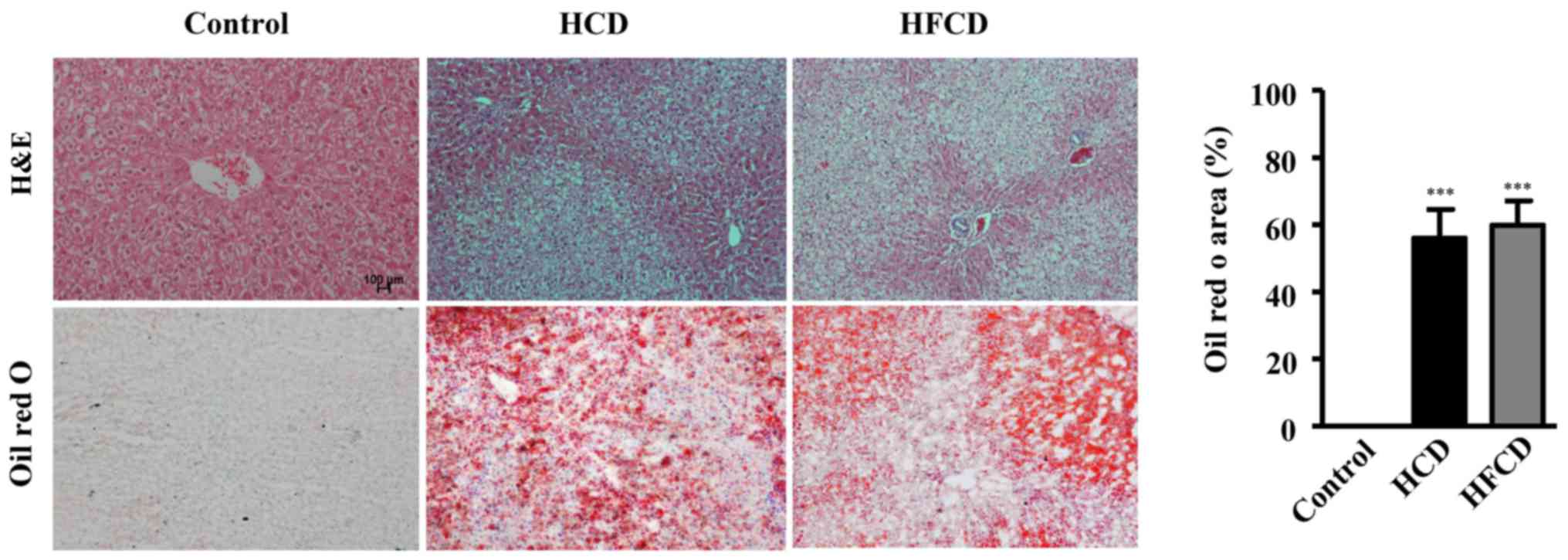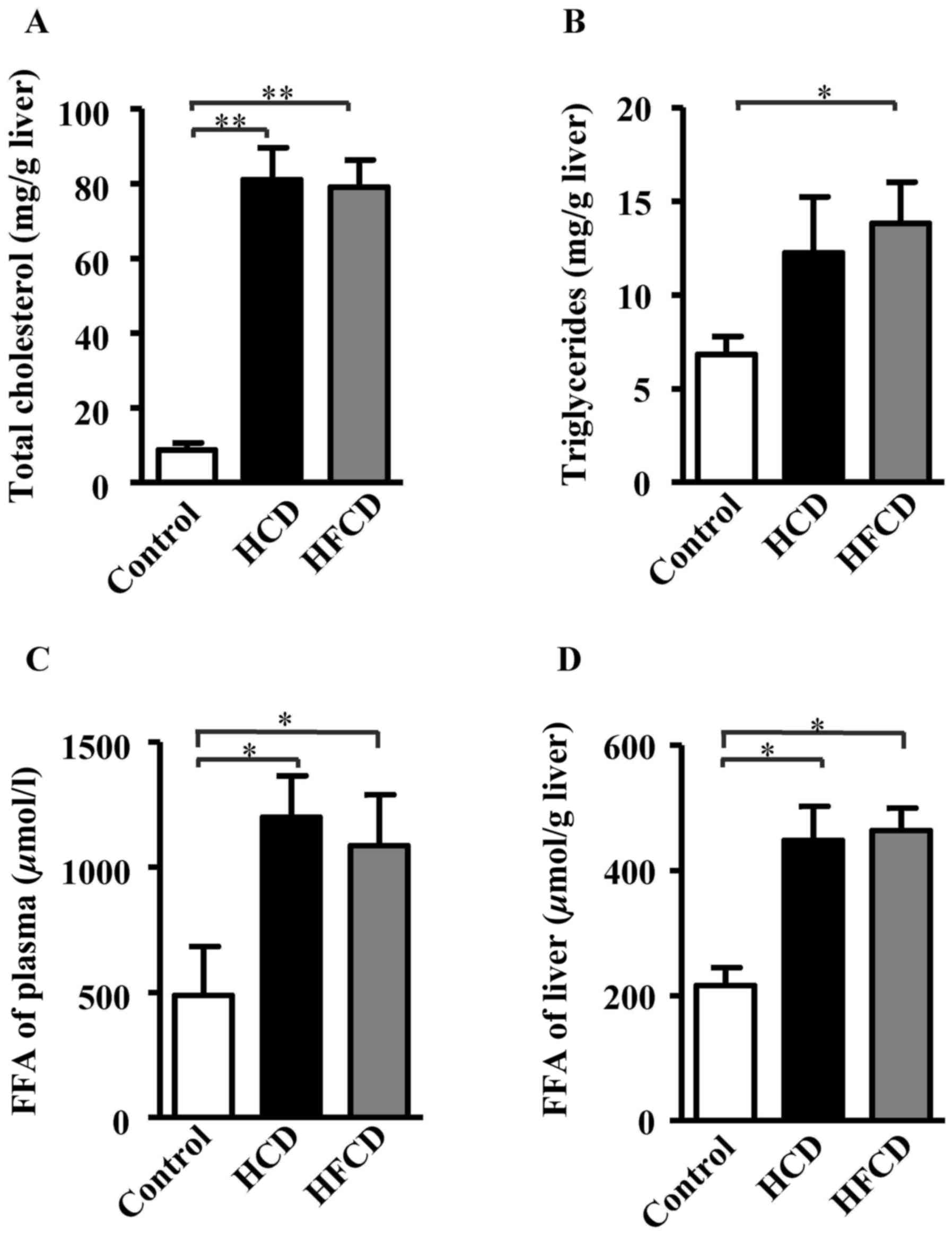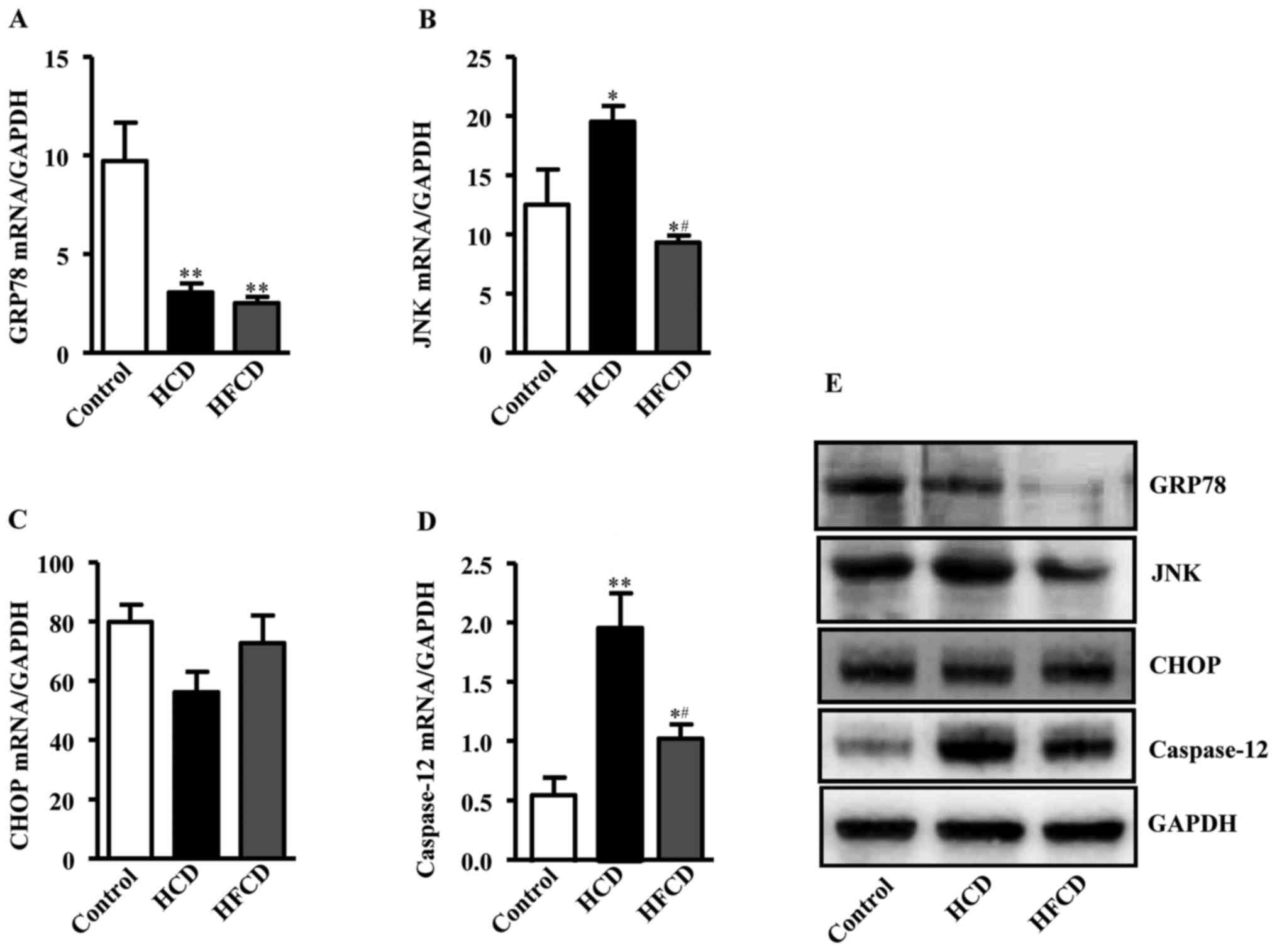|
1
|
DeFilippis AP, Blaha MJ, Martin SS, Reed
RM, Jones SR, Nasir K, Blumenthal RS and Budoff MJ: Nonalcoholic
fatty liver disease and serum lipoproteins: The multi-ethnic study
of atherosclerosis. Atherosclerosis. 227:429–436. 2013. View Article : Google Scholar : PubMed/NCBI
|
|
2
|
Kwak JH, Jun DW, Lee SM, Cho YK, Lee KN,
Lee HL, Lee OY, Choi HS and Yoon BC: Lifestyle predictors of obese
and non-obese patients with nonalcoholic fatty liver disease: A
cross-sectional study. Clin Nutr pii. S0261-5614:303012017.
|
|
3
|
Sayiner M, Koenig A, Henry L and Younossi
ZM: Epidemiology of nonalcoholic fatty liver disease and
nonalcoholic steatohepatitis in the United States and the rest of
the world. Clin Liver Dis. 20:205–214. 2016. View Article : Google Scholar : PubMed/NCBI
|
|
4
|
Chitturi S, Farrell GC, Hashimoto E,
Saibara T, Lau GK and Sollano JD: Asia-pacific working party on
NAFLD: Non-alcoholic fatty liver disease in the Asia-Pacific
region: Definitions and overview of proposed guidelines. J
Gastroenterol Hepatol. 22:778–787. 2007. View Article : Google Scholar : PubMed/NCBI
|
|
5
|
Bedogni G, Miglioli L, Masutti F,
Tiribelli C, Marchesini G and Bellentani S: Prevalence of and risk
factors for nonalcoholic fatty liver disease: The Dionysos
nutrition and liver study. Hepatology. 42:44–52. 2005. View Article : Google Scholar : PubMed/NCBI
|
|
6
|
Dai H, Wang W, Chen R, Chen Z, Lu Y and
Yuan H: Lipid accumulation product is a powerful tool to predict
non-alcoholic fatty liver disease in Chinese adults. Nutr Metab
(Lond). 14:492017. View Article : Google Scholar : PubMed/NCBI
|
|
7
|
Li Z, Xue J, Chen P, Chen L, Yan S and Liu
L: Prevalence of nonalcoholic fatty liver disease in mainland of
China: A meta-analysis of published studies. J Gastroenterol
Hepatol. 29:42–51. 2014. View Article : Google Scholar : PubMed/NCBI
|
|
8
|
Cheung O and Sanyal AJ: Recent advances in
nonalcoholic fatty liver disease. Curr Opin Gastroenterol.
25:230–237. 2009. View Article : Google Scholar : PubMed/NCBI
|
|
9
|
Day C and James O: Steatohepatitis: A tale
of two ‘hits’? Gastroenterology. 114:842–845. 1998. View Article : Google Scholar : PubMed/NCBI
|
|
10
|
Hotamisligil GS: Endoplasmic reticulum
stress and the inflammatory basis of metabolic disease. Cell.
140:900–917. 2010. View Article : Google Scholar : PubMed/NCBI
|
|
11
|
Wolins NE, Brasaemle DL and Bickel PE: A
proposed model of fat packaging by exchangeable lipid droplet
proteins. FEBS Lett. 580:5484–5491. 2006. View Article : Google Scholar : PubMed/NCBI
|
|
12
|
Gregor MG and Hotamisligil GS: Thematic
review series: Adipocyte Biology. Adipocyte stress: The endoplasmic
reticulum and metabolic disease. J Lipid Res. 48:1905–1914. 2007.
View Article : Google Scholar : PubMed/NCBI
|
|
13
|
Wei Y, Wang D, Topczewski F and
Pagliassotti MJ: Saturated fatty acids induce endoplasmic reticulum
stress and apoptosis independently of ceramide in liver cells. Am J
Physiol Endocrinol Metab. 291:E275–E281. 2006. View Article : Google Scholar : PubMed/NCBI
|
|
14
|
Werstuck GH, Lentz SR, Dayal S, Hossain
GS, Sood SK, Shi YY, Zhou J, Maeda N, Krisans SK, Malinow MR and
Austin RC: Homocysteine-induced endoplasmic reticulum stress causes
dysregulation of the cholesterol and triglyceride biosynthetic
pathways. J Clin Invest. 107:1263–1273. 2001. View Article : Google Scholar : PubMed/NCBI
|
|
15
|
Jung TW, Kim HC, El-Aty Abd AM and Jeong
JH: Maresin 1 attenuates NAFLD by suppression of endoplasmic
reticulum stress via AMPK-SERCA2b pathway. J Biol Chem.
293:3981–3988. 2018. View Article : Google Scholar : PubMed/NCBI
|
|
16
|
Catmiel-Haggai M, Cederbaum AI and Nieto
N: A high-fat diet leads to the progression of non-alcoholic fatty
liver disease in obese rats. FASEB J. 19:136–138. 2005. View Article : Google Scholar : PubMed/NCBI
|
|
17
|
Wortham M, He L, Gyamfi M, Copple BL and
Wan YJ: The transition from fatty liver to NASH associates with
SAMe depletion in db/db mice fed a methionine choline-deficient
diet. Dig Dis Sci. 53:2761–2774. 2008. View Article : Google Scholar : PubMed/NCBI
|
|
18
|
Diehl AM: Lessons from animal models of
NASH. Hepatol Res. 33:138–144. 2005. View Article : Google Scholar : PubMed/NCBI
|
|
19
|
London RM and Geroge J: Pathogenesis of
NASH: Animal models. Clin Liver Dis. 11(55–74): viii2007.
|
|
20
|
Fan J, Kitajima S, Watanabe T, Xu J, Zhang
J, Liu E and Chen YE: Rabbit models for the study of human
atherosclerosis: From pathophysiological mechanisms to
translational medicine. Pharmacol Ther. 146:104–119. 2015.
View Article : Google Scholar : PubMed/NCBI
|
|
21
|
Fan J and Watanabe T: Transgenic rabbits
as therapeutic protein bioreactors and human disease models.
Pharmacol Ther. 99:261–282. 2003. View Article : Google Scholar : PubMed/NCBI
|
|
22
|
Zhao S, Zhang C, Lin Y, Yang P, Yu Q, Chu
Y, Yang P, Fan J and Liu E: The effects of rosiglitazone on aortic
atherosclerosis of cholesterol-fed rabbits. Thromb Res.
123:281–287. 2008. View Article : Google Scholar : PubMed/NCBI
|
|
23
|
Liu E, Kitajima S, Higaki Y, Morimoto M,
Sun H, Watanabe T, Yamada N and Fan J: High lipoprotein lipase
activity increases insulin sensitivity in transgenic rabbits.
Metabolism. 54:132–138. 2005. View Article : Google Scholar : PubMed/NCBI
|
|
24
|
Ogawa T, Fujii H, Yoshizato K and Kawada
N: A human-type nonalcoholic steatohepatitis model with advanced
fibrosis in rabbits. Am J Pathol. 177:153–165. 2010. View Article : Google Scholar : PubMed/NCBI
|
|
25
|
Livak KJ and Schmittgen TD: Analysis of
relative gene expression data using real-time quantitative PCR and
the 2(-Delta Delta C(T)) method. Methods. 25:402–408. 2001.
View Article : Google Scholar : PubMed/NCBI
|
|
26
|
Guan H, Lin Y, Bai L, An Y, Shang J, Wang
Z, Zhao S, Fan J and Liu E: Dietary cocoa powder improves
hyperlipidemia and reduces atherosclerosis in apoE deficient mice
through the inhibition of hepatic endoplasmic reticulum stress.
Mediators Inflamm. 2016:19375722016. View Article : Google Scholar : PubMed/NCBI
|
|
27
|
Hübscher SG: Histological assessment of
non-alcoholic fatty liver disease. Histopathology. 49:450–465.
2006. View Article : Google Scholar : PubMed/NCBI
|
|
28
|
Deng X, Pan X, Cheng C, Liu B, Zhang H,
Zhang Y and Xu K: Regulation of SREBP-2 intracellular trafficking
improves impaired autophagic flux and alleviates endoplasmic
reticulum stress in NAFLD. Biochim Biophys Acta. 1862:337–350.
2017. View Article : Google Scholar : PubMed/NCBI
|
|
29
|
Zhao L and Ackerman SL: Endoplasmic
reticulum stress in health and disease. Curr Opin Cell Biol.
18:444–452. 2006. View Article : Google Scholar : PubMed/NCBI
|



